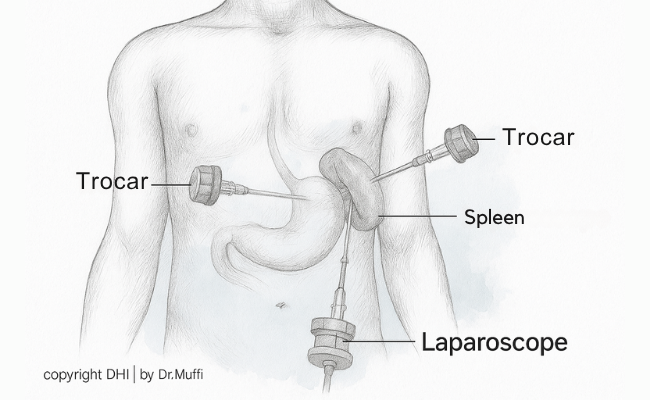Splenectomy (Removal Of Spleen)
Introduction | Advantages | Recovery

Who Is Splenectomy Recommended For?
Safe, Minimally Invasive Removal of the Spleen
A splenectomy is the surgical removal of the spleen, an organ located in the upper left side of the abdomen. While the spleen plays a role in fighting infection and filtering blood, it’s possible to live a healthy life without it — especially when it becomes damaged or diseased.
Why Is a Splenectomy Performed?
You may need a splenectomy if you have:
- Ruptured spleen (often from injury or trauma)
- Enlarged spleen causing discomfort or pressure
- Blood disorders like ITP (low platelets) or hemolytic anemia
- Spleen tumors or cysts
- Certain infections or immune conditions
Our Surgical Approach
At the Digestive Health Institute by Dr. Muffi, we prioritize minimally invasive splenectomy using laparoscopic or robotic-assisted techniques, which offer:
- Smaller incisions
- Less post-op pain
- Shorter hospital stay
- Faster recovery and minimal scarring
Open surgery may be recommended in emergency or complex cases.
Recovery & Hospital Stay
- Most patients stay in the hospital for 2–4 days
- Full recovery usually takes 2–3 weeks
- You'll receive vaccinations and follow-up care to reduce infection risk after spleen removal
What is a splenectomy?
It’s a surgical procedure to remove the spleen, an organ in your upper left abdomen that filters blood and plays a role in your immune system.
Why is a splenectomy performed?
Common reasons include a ruptured spleen due to injury, certain blood disorders (like ITP or hereditary spherocytosis), or some cancers.
Transform lives through
world-class bariatric care!

India’s premier obesity & digestive centre
Phone Number
+91 9820062040
+91 8356977265
enquiry@thedigestive.in
